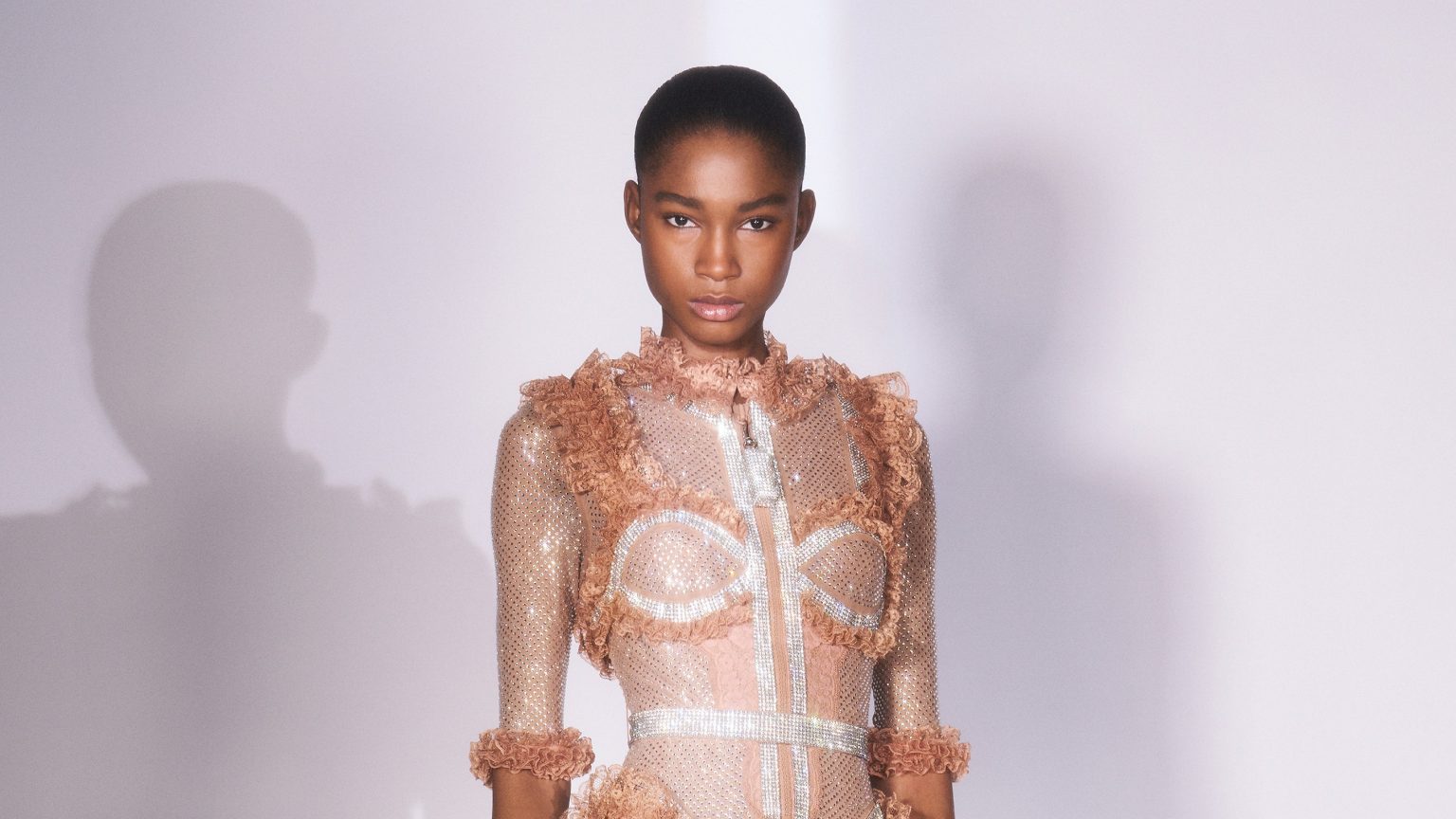In a razzle-dazzle of lights, cameras, and nonstop party action, Christopher Kane’s Residency collection for Self-Portrait set off like a fireworks display in London last night. Blinging crystal, pastel frills, chain mail, teeny-tiny bodycon dresses: All the elements that fueled his explosive debut in spring 2007 were there. “Look! She’s like a Fabergé egg!” Kane laughed, admiring a model shimmering in a neck-to-thigh smothering of silvery rhinestone mesh. Strips of chain mail twinkled around her bodice. A crystal zipper tag swung at her neck. Frilled white lace ankle socks matched the ruffles circling her bodice and hips.
The socks, this look, and 29 more went up on Self-Portrait’s website at 8 p.m. London time last night. It was just as the warehouse-size party-slash-shoot was getting started, news that had guests checking their phones and doing a double take at the prices. The aforementioned Fabergé dress: £650. The socks: £30. As much as it’s clearly a full-strength Christopher Kane throwback, there’s a lot going on that’s very different from the old days.
“This was Han’s idea,” said Kane. “He said, ‘Let’s go for it!’” Han Chong is the owner of Self-Portrait, the mega-selling phenomenon he set up in London in 2013. Having quietly built up manufacturing facilities in China and stand-alone stores selling accessibly priced event, bridal, and children’s special-occasion wear around the globe, Chong has allowed himself the luxury of setting up his Residency project. “I didn’t want to do a transactional collaboration like others,” he said. Chong was circulating delightedly around the pre-drinks fashion-show chaos. “I just had a spontaneous feeling about Christopher’s work,” he shrugged. “He celebrates femininity, and that’s what Self-Portrait is always about. And the timing’s right—we’ve had enough quiet luxury!”
Loud, fun, sexy dressing at prices to fit the budgets of teenagers and young women is now a reality on a level it couldn’t be in 2006, when Kane and his sister Tammy were laboriously hand-making every piece themselves. There aren’t any direct actual replicas from the first collection, he points out. Among the total looks are stretch-lace catsuits with scrunchie cutouts, glamorous satin bias-cut slip dresses, minis, midis, and maxis, frilled bags, and sweaters.
“Han called me in the spring, after I’d posted photos of that collection when it was in the ‘Design Museum Rebel: 30 Years of London Fashion’ exhibition,” Kane said. “It reminded him. That exhibition jogged a lot of people’s memories. I’ve had a lot of celebrities asking to borrow from the archive since then.” (Full disclosure: I curated that exhibition, with four neon-bright bandage, crystal, and lingerie-frilled dresses from Kane’s first show, which I reviewed.)
Chong gave the Kanes studio space to work out of Self-Portrait’s extensive headquarters in London’s Clerkenwell. He didn’t want anything watered-down. “He said, ‘We’ll make it work. I have factories and facilities in Asia.’ The quality is profoundly brilliant. It just feels like they’ve been hand-made because they’re so detailed. I was like, Wow.” Instead of his original neons, he’s chosen sweet baby pastels to chime with Self-Portrait’s signature palette.
It’s funny to remember how Kane’s first collection came as a gleefully sensational fashion shocker. He was inciting girls to dress up, show off, and dance in defiance of depressing times and sober, minimal clothes. All these memories were fizzing through the crowd of Kane’s friends and peers—Erdem Moralioglu, Henry Holland, Clare Waight Keller, Susie Bubble, and Yu Masui—who’d lived it all the first time round. Funny, too, to think that a whole new generation will now be dancing around in his clothes. Some might even have been born on the very day of Kane’s debut: They’d be 17, going on 18, now.

